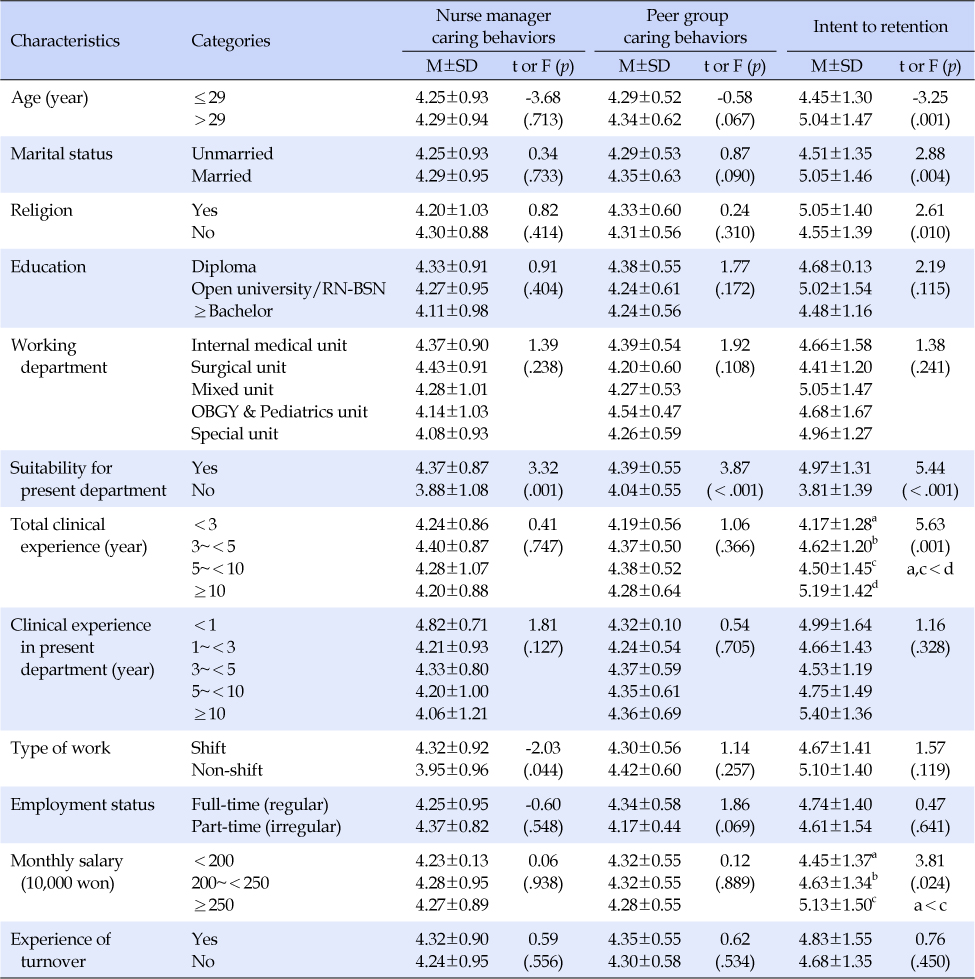College of Nursing, Jeju National University, Korea.
Copyright © 2017 Korean Academy of Nursing Administration
This is an open access article distributed under the terms of the Creative Commons Attribution Non-Commercial License (http://creativecommons.org/licenses/by-nc/3.0/), which permits unrestricted non-commercial use, distribution, and reproduction in any medium, provided the original work is properly cited.
This article is a revision of the first author's master's thesis from Jeju National University.



*Dummy variables; Age (≤29=0, >29=1), Religion (yes=0, no=1), Marital status (unmarried=0, married=1), Suitability for present department (yes=0, no=1); TCE=Total clinical experience (<3=0), TCE 1=3~<5=1), TCE 2= (5~<10=1), TCE 3 (≥10=1); MS=Monthly salary (<200=0), MS 1= (200~<250=1), MS 2= (≥250=1).

*Excluding no responses; †Only the nurses who experienced turnover (Range=1~5 times); RN-BSN=Registered nurse-bachelor of science in nursing; OBGY=Obstetrics and gynecology; Special unit=Operation room, intensive care unit, & emergency room.
RN-BSN=Registered nurse-bachelor of science in nursing; OBGY=Obstetrics and gynecology; Special unit=Operation room, Intensive care unit, & Emergency room; a,b,c,d=Scheffé test.
*Dummy variables; Age (≤29=0, >29=1), Religion (yes=0, no=1), Marital status (unmarried=0, married=1), Suitability for present department (yes=0, no=1); TCE=Total clinical experience (<3=0), TCE 1=3~<5=1), TCE 2= (5~<10=1), TCE 3 (≥10=1); MS=Monthly salary (<200=0), MS 1= (200~<250=1), MS 2= (≥250=1).
*Excluding no responses; †Only the nurses who experienced turnover (Range=1~5 times); RN-BSN=Registered nurse-bachelor of science in nursing; OBGY=Obstetrics and gynecology; Special unit=Operation room, intensive care unit, & emergency room.
RN-BSN=Registered nurse-bachelor of science in nursing; OBGY=Obstetrics and gynecology; Special unit=Operation room, Intensive care unit, & Emergency room; a,b,c,d=Scheffé test.
*Dummy variables; Age (≤29=0, >29=1), Religion (yes=0, no=1), Marital status (unmarried=0, married=1), Suitability for present department (yes=0, no=1); TCE=Total clinical experience (<3=0), TCE 1=3~<5=1), TCE 2= (5~<10=1), TCE 3 (≥10=1); MS=Monthly salary (<200=0), MS 1= (200~<250=1), MS 2= (≥250=1).